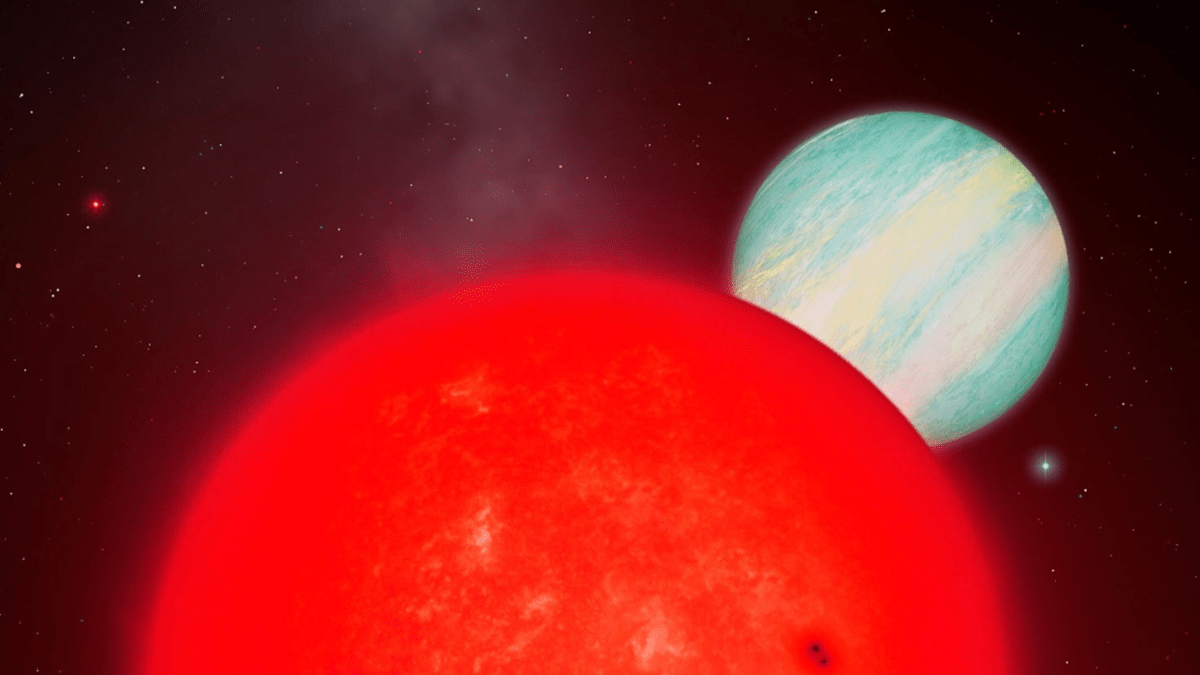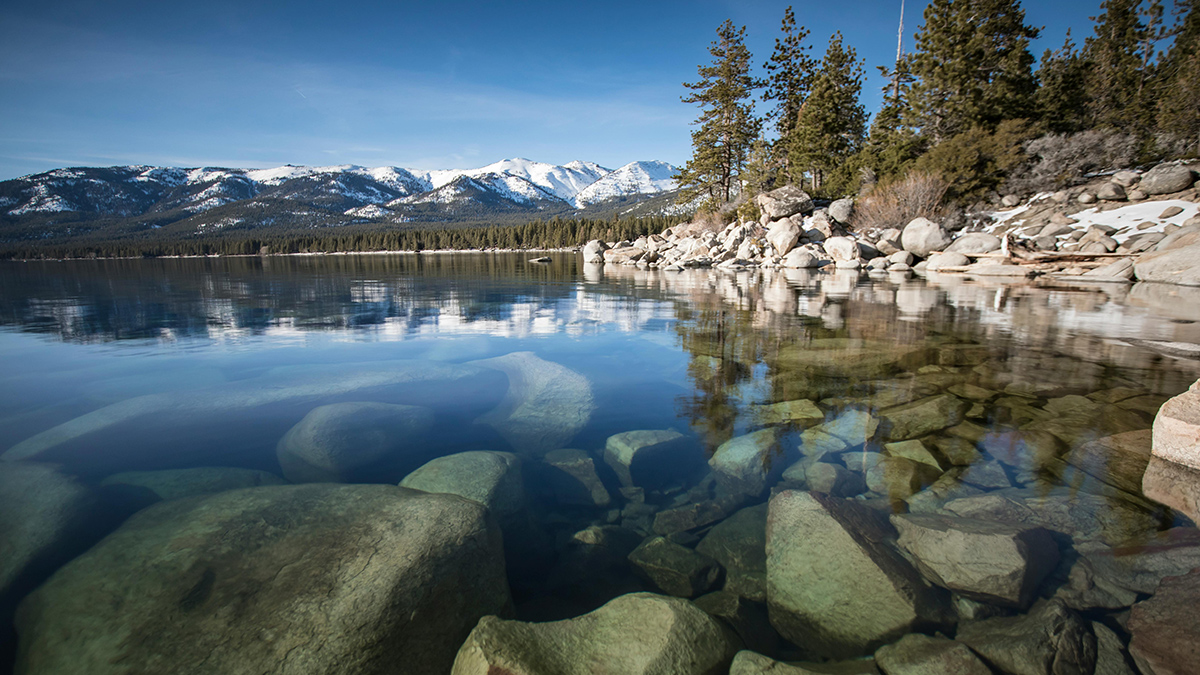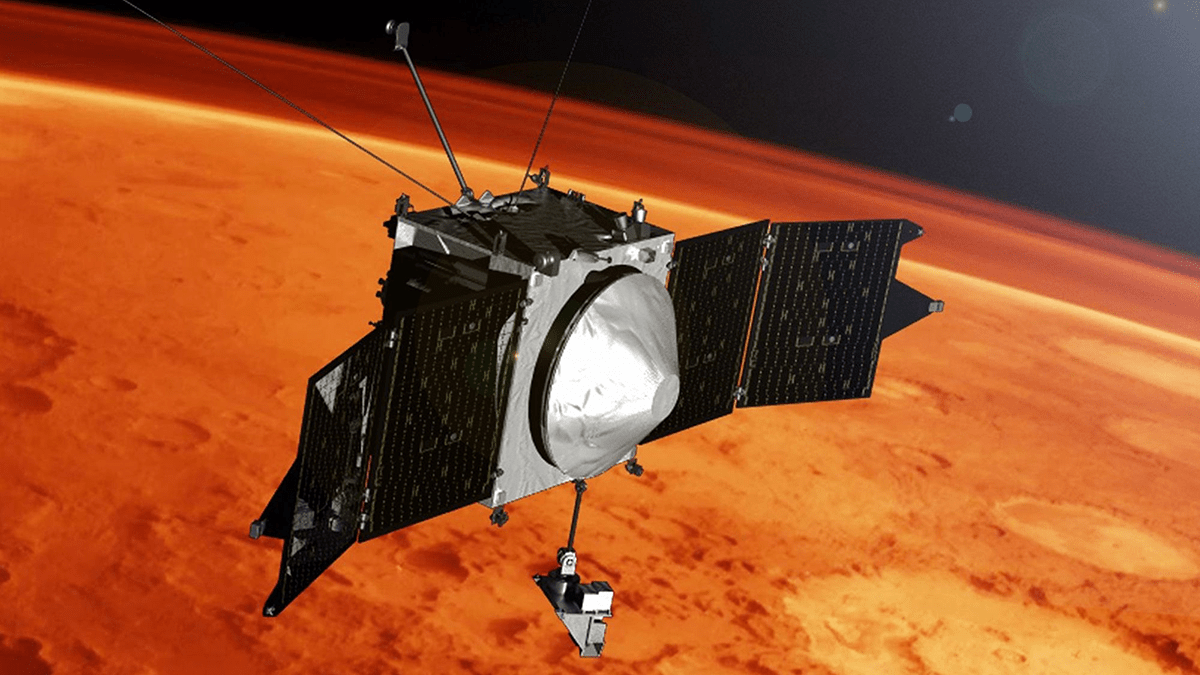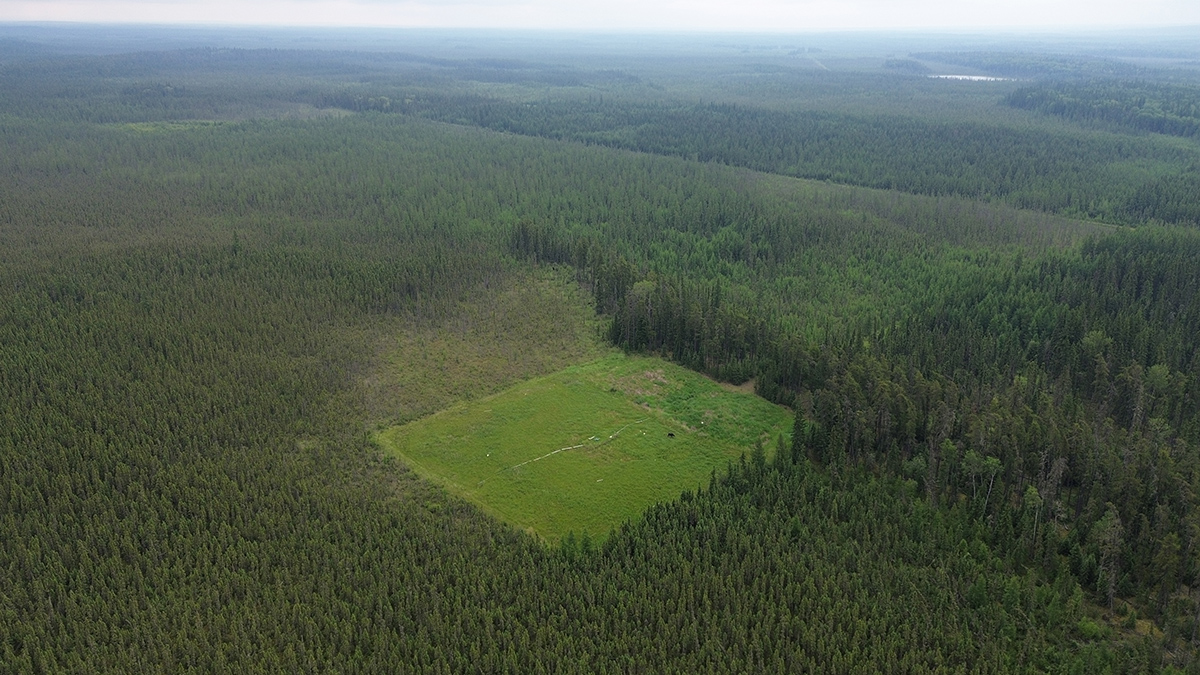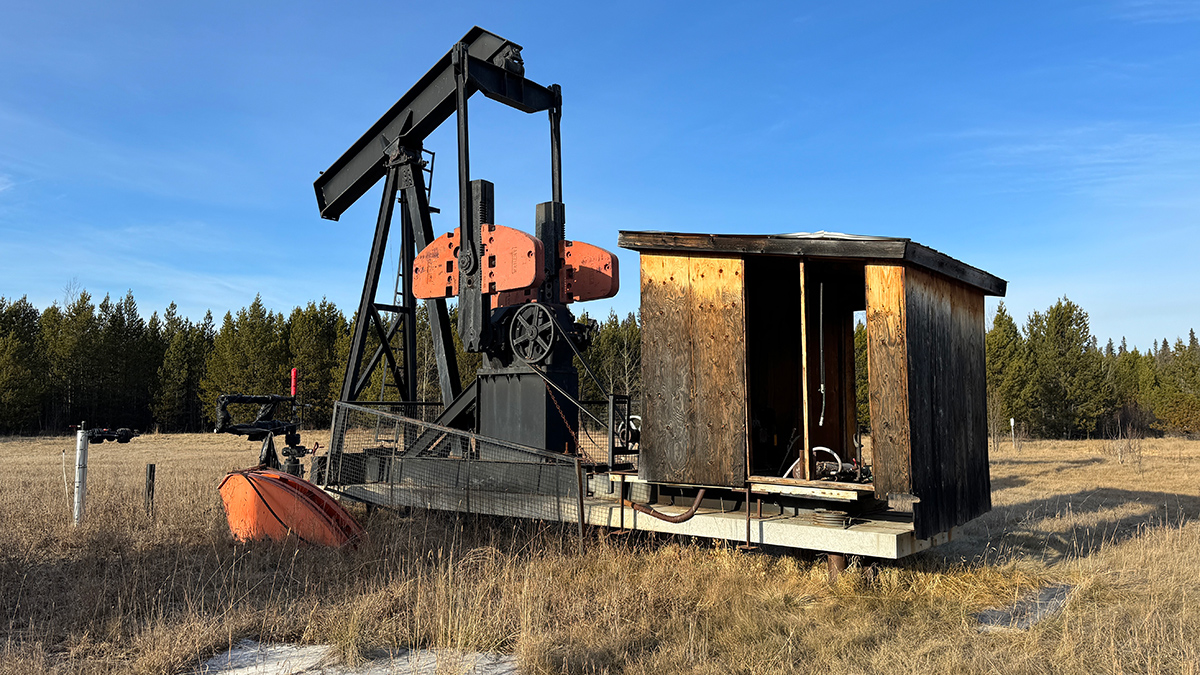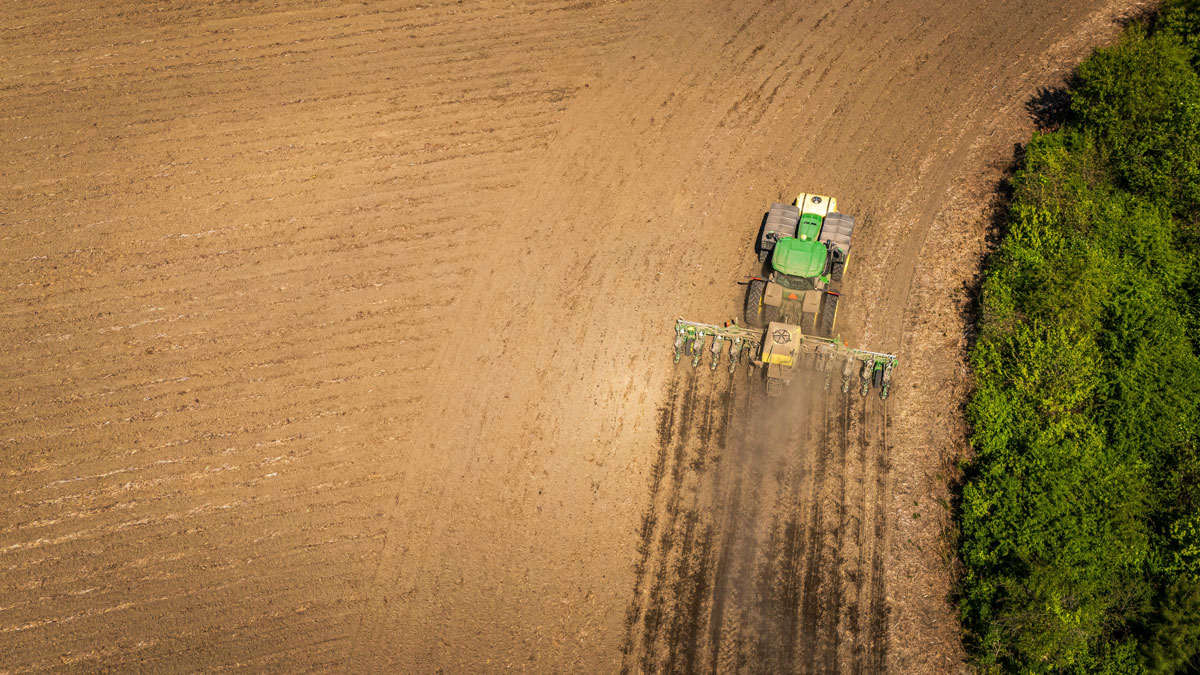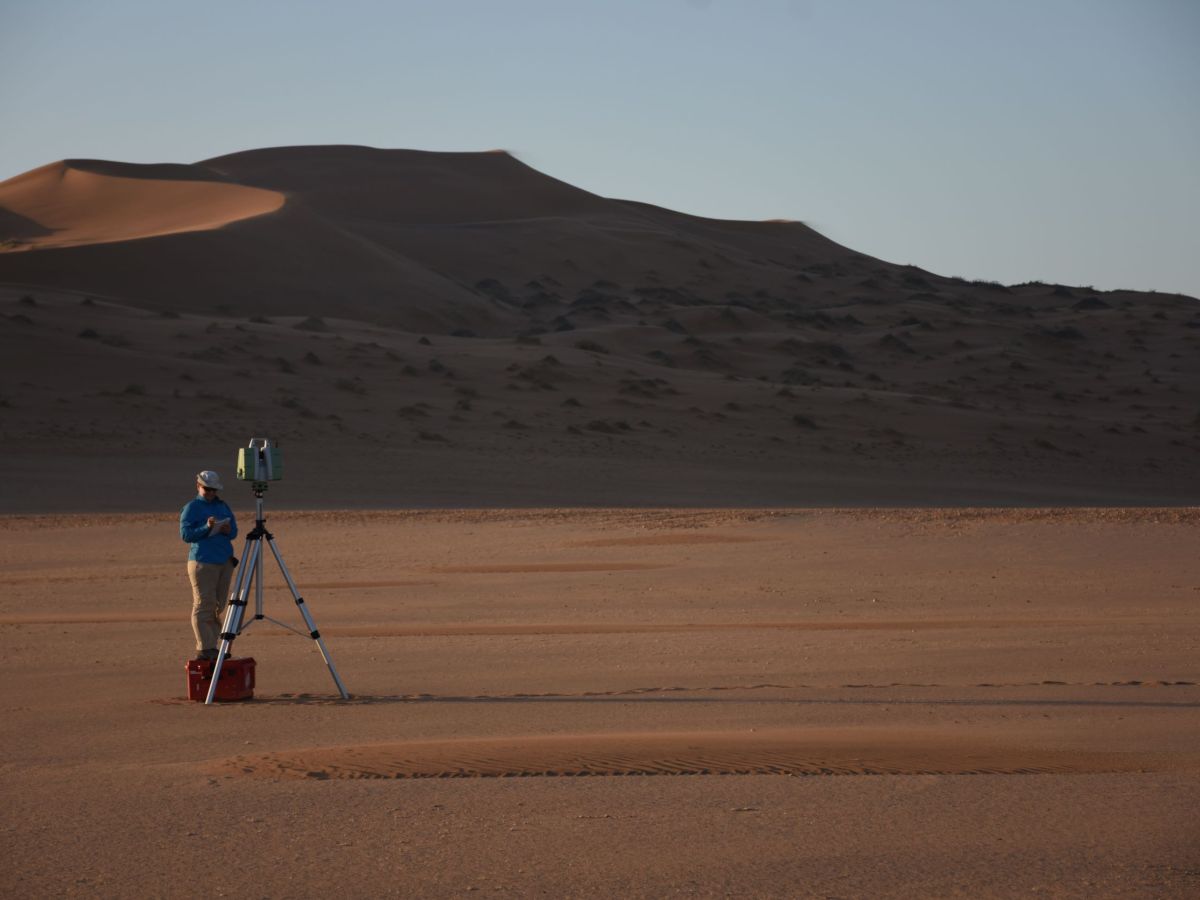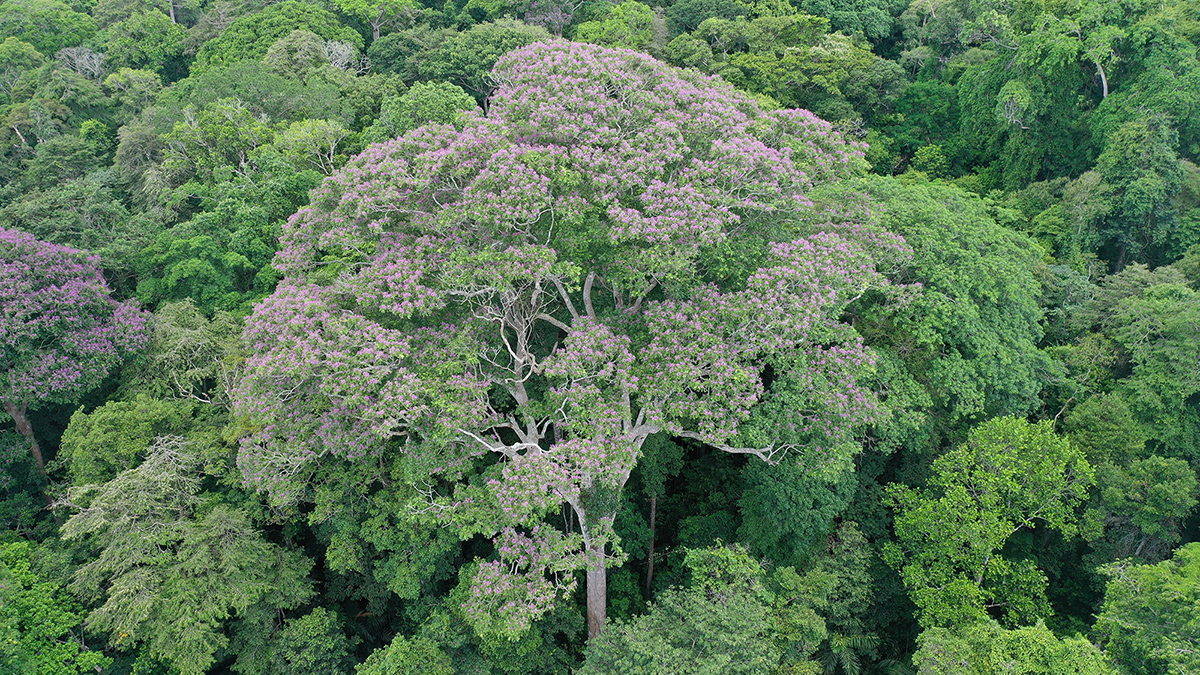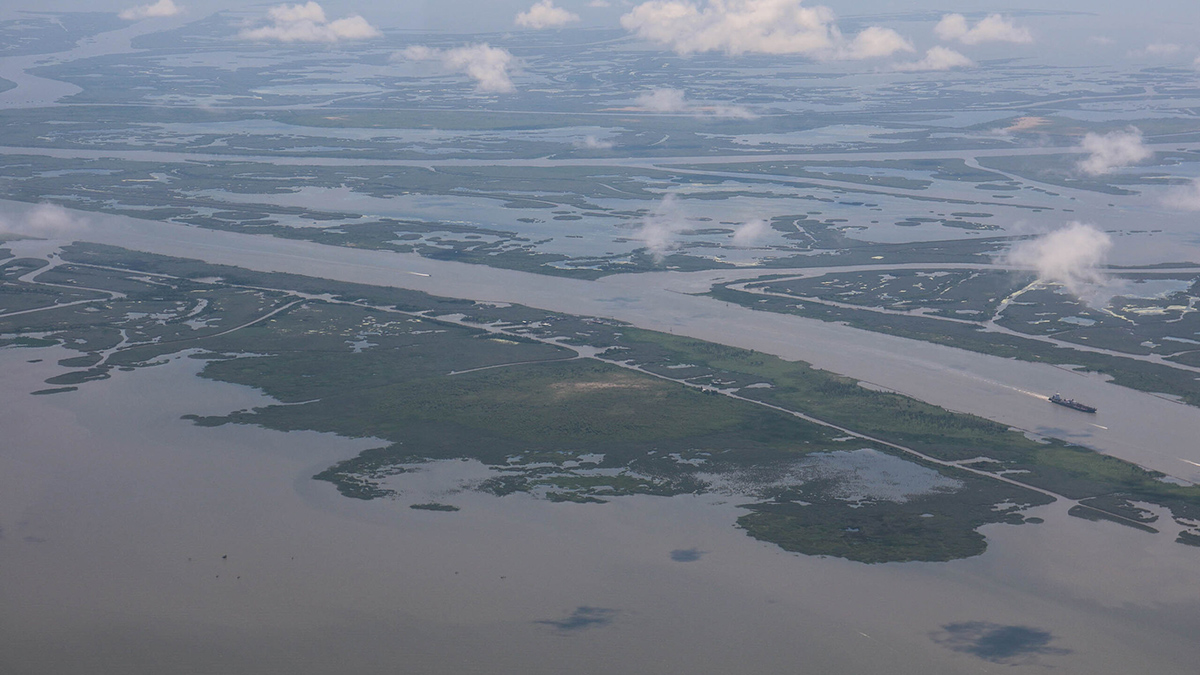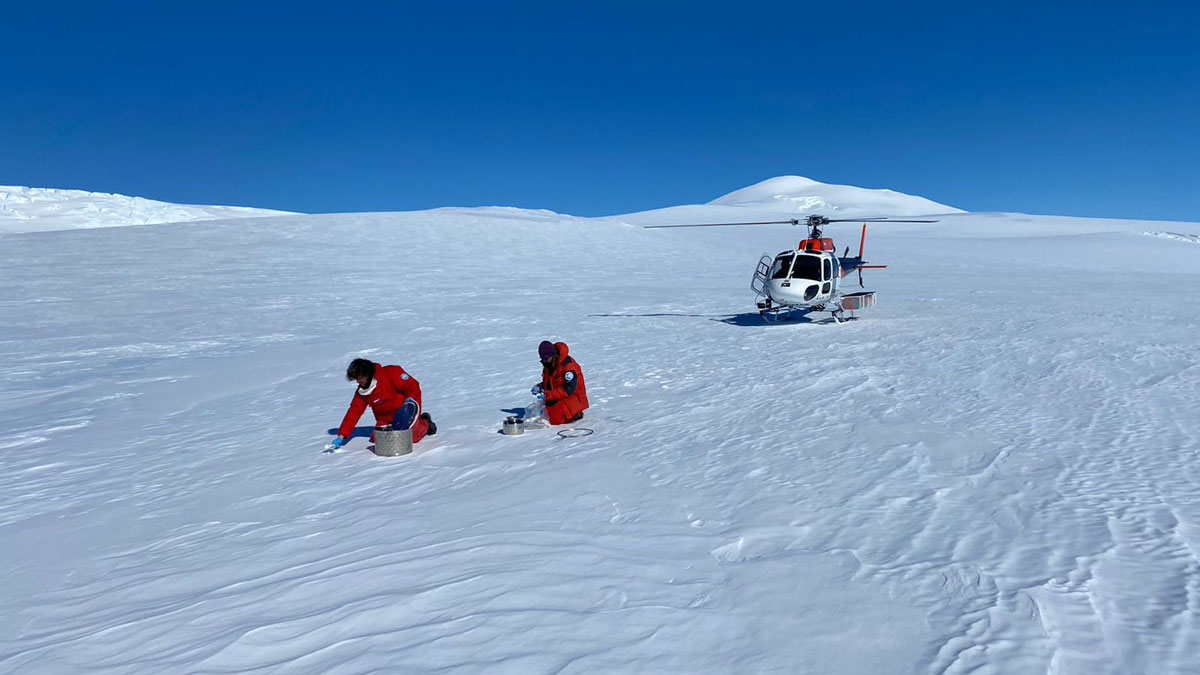TOI-6894 b, the largest exoplanet relative to its host star yet seen, doesn’t fit the most widely accepted formation model for giant worlds.
News
Precipitation Extremes Drive Swings in Lake Tahoe’s UV Exposure
An 18-year study reveals dramatic year-to-year variations in ultraviolet radiation penetration tied to Sierra Nevada precipitation cycles.
Scientists Spot Sputtering on Mars
Nearly a decade’s worth of data went into the first direct observation of sputtering on Mars, which researchers believe contributed to the loss of the Red Planet’s atmosphere.
Surface Conditions Affect How Mosses Take to Former Well Pads in Canada’s Boreal Fens
With the help of key moss species, a new approach aims to restore the fens of the Western Boreal Plain.
Nonproducing Oil Wells May Be Emitting 7 Times More Methane Than We Thought
A study measured methane flow from more than 450 nonproducing wells across Canada, but thousands more remain unevaluated.
Fallowed Fields Are Fueling California’s Dust Problem
New research shows that unplanted agricultural lands are behind most of the state’s anthropogenic dust events.
Mini Dunes Form When Sand Stops Bouncing
Decoding how sand grains move and accumulate on Earth can also help scientists understand dune formation on Mars.
Algunos árboles tropicales se benefician de los rayos
Dos imágenes muestran el mismo árbol, antes (izquierda) y después (derecha) del impacto de un rayo. En la imagen de la derecha, el árbol no está cubierto de enredaderas leñosas y algunos de los árboles que lo rodean han muerto.
Tracking the Sediment Carried by the Muddy Mississippi
New research shows that typically, less than 10% of land-building alluvium reaches the Bird’s Foot Delta region, the southernmost reach of the river, where it meets the Gulf.
Is Your Shampoo Washing Up in Antarctica?
Researchers have found chemicals from personal care products like shampoo, deodorant, and laundry soap in Antarctic snow.

